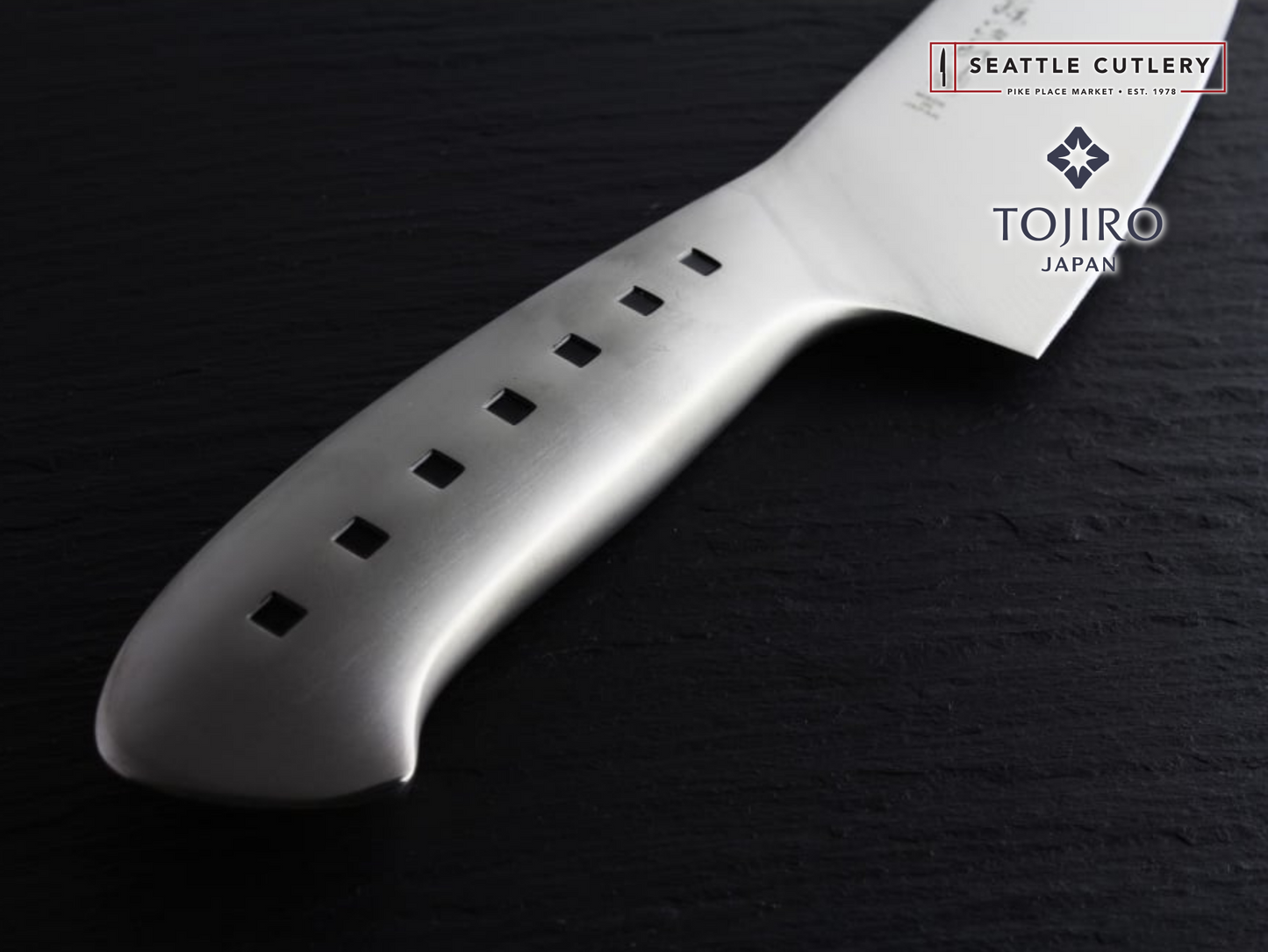Sha Ra Ku Mono Peeling Knife, 70 mm (2.8")
Sha Ra Ku Mono Peeling Knife, 70 mm (2.8")
In stock
Couldn't load pickup availability
Share
The second masterpiece by visionary industrial designer Komin Yamada, Sha Ra Ku Mono’s seamless construction, elegant contours, and standout design have earned it a place in our carefully curated collection for over twenty years. Unlike Global knives, Yamada’s previous creation, Sha Ra Ku Mono features hollow handles that give it a delicate balance evocative of traditional wood-handled Japanese knives.
Sha Ra Ku Mono is produced by Tojiro in Tsubame, Japan and distributed exclusively by Seattle Cutlery.
Function
Function
The peeling, tourné, or bird’s beak paring knife is a specialized paring knife designed for the tourné cut, a staple of fine French cuisine, as well as peeling and other specialty uses. Its uniquely curved blade excels at precisely peeling curved fruits and vegetables, while its narrow tip allows it to easily slide under the skin of an onion or potato. In skilled hands, it can be used for other intricate garnish work.
Blade
Blade
Sha Ra Ku Mono blades are forged from molybdenum-vanadium alloy stainless steel, which finely balances edge retention, toughness, and corrosion resistance. This alloy is softer than the VG-10 steel used in other Tojiro knives but harder than European knife steels and is comparatively easy to sharpen.
Handle
Handle
The handle is made from hollow 18/8 stainless steel, crafted with the blade as a single piece. Much like a traditional wooden wa handle, its light weight keeps the knife's balance farther forward than on European knives. The ergonomic shape allows it to be gripped either by the handle or with a more versatile pinch grip.
Specifications
Specifications
Length
70 mm (2.8") blade, 180 mm (7.1") overall
Weight
45 g (1.6 oz)
Blade Material
Molybdenum-vanadium stainless steel
Edge
Double bevel
Handle Material
Hollow 18/8 stainless steel
Handle Shape
Ergonomic
Care & Maintenance
Care & Maintenance
Wash your knife by hand with warm water, soap, and a soft sponge or dish towel. Avoid prolonged exposure to heat or moisture. Remember—there's no such thing as a dishwasher-safe knife!
To prevent edge chips, avoid impacts with hard surfaces. Don't chop bones, shells, or frozen food, and cut only on a wood or bamboo cutting board. Don't leave your knife where the edge might come in contact with something hard, such as in a sink or a drawer with other knives.
Store your knife so that the edge is protected from abrasion and impact. We recommend a magnetic stand, but you can also use a knife block with horizontal slots. If you must keep it in a drawer, use an edge protector. See our storage options here.
Sharpening
Sharpening
Sharpen on a whetstone at an angle of 15° per side and finish at a grit of at least 1000, but preferably 3000 or higher. Pull-through and electric sharpeners should be avoided for Japanese knives.
Alternatively, you can have your knives sharpened professionally. Seattle Cutlery offers a state-of-the-art, mail-in sharpening service for our own customers, but other services may be available to you locally.
Honing steels are not necessary to maintain Japanese knives. You can optionally touch up the edge with a high-grit sharpening stone or a ceramic sharpening rod.
Warranty
Warranty
All Nakiyo, Tojiro, Sabatier, and SeaCut products sold by Seattle Cutlery are covered by our lifetime warranty against defects in materials and workmanship. If you follow our care and maintenance advice and your knife ever fails during honest use, we will gladly repair or replace it. Our warranty does not cover regular wear and tear or damage due to misuse, but we may still be able to help in some cases.
Returns
Returns
Any item in original, unused condition may be returned within 30 days for any reason. Shipping charges are non-refundable. Read our full refund policy here.









